Learn More About PUC
Archives
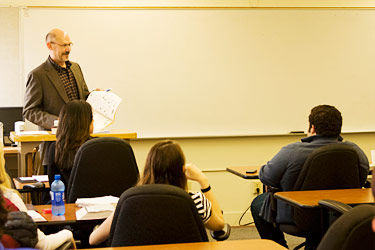
Lighthouse Addresses Rotary
Posted by PR Staff Writer on December 17, 2010
Business department chair Wally Lighthouse spoke to a group of over 60 Rotarians and guests at the December 9 meeting of the Napa Sunrise Rotary Club. The group meets at the Silverado Country Club in Napa, Calif. His talk, entitled “Economic Forecast 2011,” was well received by the enthusiastic attendees. Lighthouse discussed next year’s outlook in areas such as employment, retirement and debt trends, tax policy and inflation. “He was very informative,” said Doris Gentry, the club’s public relations officer. “[It was] a heavy topic but important to all of us.”...
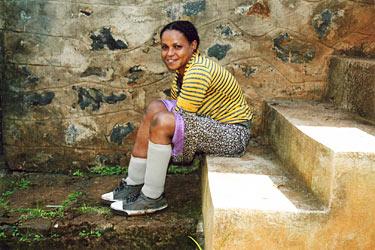
REVO 2010 Results Reach Ethiopia
Posted by Larry Pena on December 16, 2010
Last school year REVO PUC, an annual student-run awareness and fundraising event, raised over $5,000 to help combat podoconiosis, a debilitating foot condition that is especially prevalent in Ethiopia. Last month those donations reached the African nation and are already making a difference. According to a recent letter from the Tropical Health Alliance Foundation, REVO’s partner on the project, over 2,000 Ethiopians are currently receiving treatment for the disease and 7,000 pairs of shoes have been donated in a matching program by TOMS Shoes, thanks in part to the student efforts at PUC. Students involved with REVO spend much of the year planning a major event each spring, to benefit a special philanthropy project chosen each year. The event raises funds through student donations and a sale of donated goods. It also generates awareness for the chosen issue through an all-year publicity campaign and a variety of smaller events throughout the school year. In addition to the funds raised by REVO, PUC also hosted a visitor participation booth at last summer’s Seventh-day Adventist General Conference session in Atlanta, Ga. Visitors to the booth allocated over $1,300 in additional funding to go toward the project. “It goes to show you how...
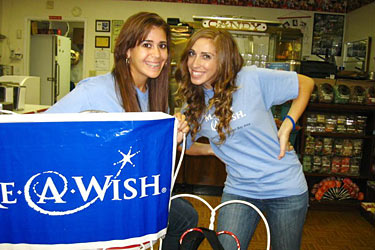
Wish Makers at PUC
Posted by Lauren Knight on December 13, 2010
Ever since Rayna Duran was young she has had a great passion for wanting to help people, but prior to joining the Make-A-Wish Foundation she didn’t know how to put her passion to actions. There were two events that helped Duran solidify her future for helping people. The first was seeing a movie called My Sister’s Keeper, about a young girl’s terminal illness and how it affects her family. “This movie cut me to the core and I was able to safely say I wanted to work with children in the hospital and volunteer my time to help them out,” said Duran, a junior business major at Pacific Union College. The second event was a Jonas Bothers concert she attended. “I respect them very much for their ability to stand strong for what they believe in,” said Duran. “Nick Jonas sang a song, ‘A Little Bit Longer’ which was a song about his diabetes and also to inspire young children who are having a difficult time medically that there is a light at the end of the tunnel.” The movie and concert had such a profound effect on Duran that she knew God was showing her the path that he...
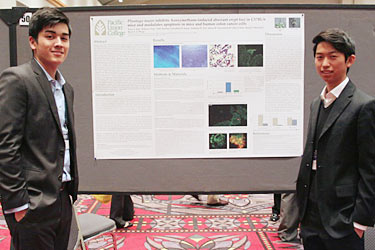
Biology Students Present Cancer Research
Posted by Larry Pena on December 8, 2010
Two PUC biology students presented new cancer research at a conference of the American Association of Cancer Research November 6 to 11 in Philadelphia, Penn. Juniors Peter Han and Robert Frey have been studying the effects of an herbal extract on cancer cells—a project that afforded them an opportunity to participate in their first major scientific conference. “It helped us understand what academic science is all about,” said Han. “It’s about collaboration—you can’t do it by yourself; you need a base.” According to the preliminary research that Han and Frey presented, an orally administered extract of the herb plantago major inhibited pre-cancerous cells in lab mice, and also induced a self-destructive function called apoptosis in cancerous cells. The team plans to continue their research into the topic and eventually present a formal paper for peer review. If research continues to support these early findings, this new information could impact future cancer treatment—especially as patients attempt to avoid harsher treatments like chemotherapy. This area of study is especially significant to Han and Frey, both of whom are considering medical school after they complete their undergraduate studies. “Going into the health care field, we’re going to have to know the newest treatments...
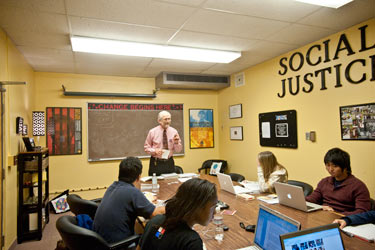
A Celebration of Social Justice
Posted by Katelynn Christensen on November 18, 2010
The Pacific Union College department of psychology and social work celebrated social justice on Thursday, November 4, in a dedication of the new Social Justice Room, Davidian Hall 106, to Gordon Madgwick and Evaline West. The event honored Madgwick’s and West’s promotion of social justice through their contribution to Adventist education. The Social Justice Room is expected to function as a space for planning social justice activities and to serve as a reminder in class and departmental meetings of the relationship of social justice to the department’s core values of diversity, free inquiry, service to God and humanity, and responsible citizenship. “We [want the Social Justice Room] to be a working space that [will] continually engage and challenge us to put our hands to whatever project is needed at the time… We hope that the students and teachers who are here 20 years from now will use this space to fight injustice as it is expressed then,” said PUC psychology professor Aubyn Fulton in his opening remarks. Professor of religion and social science Greg Schneider spoke in memory of the late Madgwick, who served at PUC as vice president of academic affairs and academic dean. “Gordon Madgwick dedicated his life...
